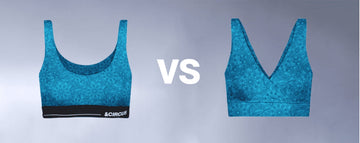Quick Listen:
Every morning, as you slip into a pair of underwear, you're making a choice not just about comfort or style, but about the planet's future. It's a fleeting moment, easily overlooked, yet the fashion industry's environmental toll demands we pay attention. Accounting for 2% of global greenhouse gas emissions, the sector is a major contributor to pollution, water overuse, and textile waste. But a quiet revolution is underway, led by biodegradable underwear innerwear crafted from materials like organic cotton, hemp, and bamboo. Brands like Tailor and Circus, champions of inclusivity and sustainability, are redefining what's possible. Their biodegradable designs promise a future where fashion treads lightly on the earth. Can something as simple as your underwear really help? Let's explore the stakes, the solutions, and the challenges.
Sustainable Fashion's Rising Tide
The fashion industry's environmental footprint is undeniable. Producing a single cotton shirt can consume a significant amount of water, while wastewater from textile manufacturing pollutes rivers and ecosystems. Globally, the industry churns out 80 billion clothing items annually, yet in the United States, 85% of consumed garments end up in landfills, with less than 1% recycled into new clothing. This wastefulness, coupled with energy-intensive production, has made fashion a key driver of climate change. But the tide is turning.
Consumers are demanding change, and brands are responding with sustainable alternatives. The market for sustainable fabrics is set to reach $26.71 billion by 2025, growing at a compound annual rate of 12.2% through 2033. Driven by heightened environmental awareness, stricter textile waste regulations, and a hunger for eco-friendly products, this surge reflects a broader shift. Materials like organic hemp, linen, recycled polyester (Repreve), Tencel, and even Piatex made from pineapple leaf fiber are gaining traction. These fabrics, unlike conventional polyester or chemically treated cotton, minimize environmental harm and, in many cases, biodegrade naturally.
For underwear, this transformation is particularly significant. Worn daily and replaced often, innerwear is an ideal canvas for sustainable innovation. Tailor and Circus, for instance, crafts briefs and boxers from organic cotton and bamboo materials that are soft, breathable, and planet-friendly. These fabrics decompose naturally, unlike synthetic blends that persist in landfills for centuries, releasing microplastics. By prioritizing biodegradable materials, brands are proving that sustainability and style can coexist.
The Power of Biodegradable Underwear
What makes biodegradable underwear a game-changer? Picture a pair of Tailor and Circus boxer briefs, woven from organic hemp or cotton. These materials feel luxurious against the skin, but their true value lies in their lifecycle. When discarded, they break down naturally with the help of soil bacteria, leaving no toxic residue. Compare that to conventional underwear, often a mix of polyester and elastane, which can linger in landfills for hundreds of years, fragmenting into harmful microplastics.
The environmental benefits are tangible. In New York State alone, residents and businesses discard 1.4 billion pounds of textiles annually, including clothing, footwear, and linens that could be reused or recycled. Nationally, the average person throws out 81 pounds of clothing each year, with only 15% of post-consumer textiles recycled. Biodegradable underwear counters this trend, reducing landfill pressure and diverting waste from incinerators.
The biodegradable fabrics market, valued at $5.22 billion in 2024, is projected to skyrocket to $19.55 billion by 2035, growing at a 12.75% annual rate. This boom is fueled by demand for eco-friendly apparel, from hemp-based briefs to silk camisoles. Beyond waste reduction, biodegradable materials like organic cotton and hemp require less water and fewer pesticides than conventional cotton, which is notoriously resource-intensive and pollutes waterways. By choosing biodegradable innerwear, consumers can shrink their environmental footprint while supporting a greener supply chain.
Challenges to Scaling Sustainability
If biodegradable underwear holds such promise, why isn't it ubiquitous? The barriers are rooted in economics, infrastructure, and human behavior. First, sustainable fabrics are costly to produce. Organic cotton and hemp demand meticulous cultivation, while advanced materials like polylactic acid (PLA) or Tencel require cutting-edge technology. These expenses often result in higher retail prices, which can alienate cost-conscious consumers.
Supply chain limitations pose another hurdle. Despite its growth, the biodegradable fabrics market expected to hit $13.65 billion by 2032 with a 12.8% annual growth rate remains a small fraction of the global textile industry. Scaling production to meet mainstream demand is challenging, as supply chains for biodegradable materials lag behind those for conventional fabrics. Quality inconsistencies, such as variations in texture or durability, also persist, though technological advancements are narrowing this gap.
Consumer awareness is a critical bottleneck. Many shoppers remain unaware of fashion's environmental toll or the benefits of biodegradable alternatives. Others hesitate to adopt new options, skeptical about comfort, fit, or performance. Disposal practices further complicate matters. Biodegradable fabrics require specific conditions, such as industrial composting, to decompose effectively. If tossed into oxygen-starved landfills, their eco-friendly potential is diminished.
Opportunities for a Circular Future
Despite these obstacles, the outlook is optimistic. Innovation and consumer demand are driving the biodegradable fabrics market forward, with companies like Tailor and Circus leading the charge. By integrating eco-friendly materials into stylish, inclusive designs, they're not just selling underwear they're advocating for a sustainable future. The business case is strong: sustainable practices can optimize manufacturing, cut waste, and foster customer loyalty. Transparent brands that trace their material's origins and production processes build trust in a wary market.
Certifications like the Global Organic Textile Standard (GOTS) and partnerships with environmental organizations can elevate a brand's credibility, transforming niche products into mainstream staples. Biodegradable underwear also aligns with the vision of a circular fashion economy, where products are designed for reuse, recycling, or composting. Materials like PLA, derived from corn starch, exemplify this potential, balancing durability with environmental compatibility.
The broader impact is profound. As consumers embrace biodegradable innerwear, they signal demand for systemic change, pressuring brands and policymakers to prioritize sustainability. Government policies promoting eco-friendly practices, coupled with advancements in material technology, are accelerating this shift. The result? A fashion industry that's less extractive and more regenerative.
A Call to Action: Your Role in Change
Experts are clear: individual choices matter. Opting for biodegradable underwear won't reverse climate change single-handedly, but it's a meaningful step. The fashion industry is highly responsive to consumer demand, making every purchase a vote for sustainability. Each purchase of organic cotton briefs or hemp boxers amplifies the call for a cleaner industry.
Tailor and Circus embodies this ethos, crafting biodegradable innerwear that's as inclusive as it is sustainable. Their work challenges us to rethink our daily choices. The biodegradable fabrics market, valued at $5.17 billion in 2022 and projected to reach $14.39 billion by 2030, underscores the momentum. From clothing to medical products, these materials are reshaping industries with minimal environmental harm.
Next time you shop, consider the lifecycle of your underwear. Will it nourish the soil or burden the earth? By choosing biodegradable options, you're not just dressing for the day you're voting for a future where fashion and the planet thrive in harmony. The power is in your hands, one pair at a time.
Disclaimer: The above helpful resources content contains personal opinions and experiences. The information provided is for general knowledge and does not constitute professional advice.
You may also be interested in: Low Impact vs. High Impact Bras: Understanding the Difference for
Uncomfortable underwear shouldn't steal your confidence. At Andcircus, we craft ultra-soft, sustainable Lenzing Modal Micro innerwear for every body, XS to 5XL. From briefs to bras, our custom packs fit you perfectly. Shop risk-free with our 100% satisfaction guarantee and embrace comfort that includes everyone. #LoveEveryBody. Shop Now!







































